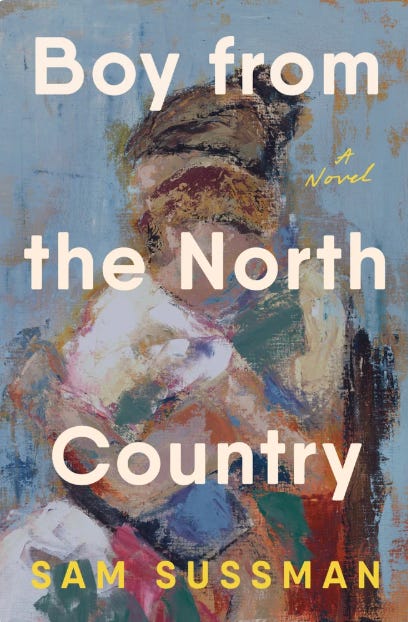The NaturalThe Movie Team Interrupts BookWag With a Redford Tribute — Plus New Reads From Kiran Desai, Samanta Schweblin, Jill Lepore, Sam Sussman, Ian McEwan, and More...Dear Wags, The hazard of obituaries is that they make you think all the best people are dead. This is especially true of movie stars, who diminish year by year. In the early 1970s, when Robert Redford hit the peak of his fame, the greats of the Golden Age were dropping like flies, and nostalgia for the old studio days was taking hold. Redford, Beatty, Fonda, Pacino, Hoffman, Nicholson, Streisand, Sutherland, and Newman—the denim-and-shag avatars of New Hollywood—took their place. It was a rebellious era, if one still driven by stardom. Redford embodied that changing of the guard. He was both beautiful and serious, allergic to the studio system that produced him, an activist and a mogul, the golden boy from Santa Monica who, like so many guys of his generation, longed to be a mountain man. Our grandfathers may have seen themselves in John Wayne, but our fathers identified with Redford: the anti-establishment cowboy, the back-to-the-land environmentalist, a suburban prince who rejected conventional dreams for a place on Nixon’s Enemies List. As an artist and man, Redford carried himself with glamorous ambivalence. This applied to his arresting good looks and to his country. “If you want to slice into America, it's pretty red, white, and blue in terms of how it goes about things,” he said. “But there's a gray area there, and I've always been interested in where things are complicated.” For a blazing moment, that attitude was the cultural fashion. But the conflicted Redfordian view of America—embodied in Butch Cassidy and the Sundance Kid, The Candidate, All the President’s Men, Three Days of the Condor, Jeremiah Johnson, even the sudsy The Way We Were—was clubbed by the blunt instrument of 1980s pop culture. Redford’s rumpled tweed coat of manhood was tossed aside by Rambo. Alongside the shift came the triumph of celebrity worship. Scandal sheets had always been a part of Hollywood, but by century’s end, their garish sensibility dominated media and shaped the digital platforms that followed. Redford loathed the hype machine. He sent it up in The Electric Horseman, where a rodeo star hired as a cereal pitchman rides off with the sponsor’s prize racehorse. Jane Fonda’s exasperated reporter tries to make sense of his rebellion: “OK, I respect your position. I don’t understand it, but I respect it. A lot of famous people hated publicity: Albert Schweitzer. Franco… Albert Schweitzer!” That line might as well have been written about Redford, who felt suffocated by fame and moved behind the camera with Ordinary People (1980), which won him the Oscar for Best Director. A River Runs Through It (1992) and Quiz Show (1994) continued his American tales of wide-open spaces, and the gray ones in between. His last great movie role, Roy Hobbs in The Natural (1984), was a valedictory on stardom itself. “I coulda been better. I coulda broke every record in the book,” Hobbs says. “And then when I walked down the street, people would've said there goes Roy Hobbs, the best there ever was in this game.” Redford never wanted it that badly. His influence—including the founding of Sundance—was a rebuke to packaged entertainment, a counterpoint to the star-making machine. “If you’re going to take a risk, you have to be prepared if it doesn’t work,” he said. “You have to have perseverance and a certain gumption and maybe be a little nuts.” He was all those things, and despite his deflections, a magnificent, elusive screen persona. By riding away from the Glitter Dome, he became one of its greatest stars. Yours Ever, David Chappellet What We Can Know by Ian McEwan At Wag HQ, we like to say we’re for the humanities because they make us humane. Lately, that’s felt like a forlorn howl as barbarism advances from all sides. Ian McEwan’s latest novel is very much on our wavelength. Set in 2119, What We Can Know follows Thomas Metcalfe, one of civilization’s last academics, as he investigates a century-old poem called A Corona for Vivien. Since its composition by Francis Blundy in 2014, the world has collapsed under environmental disaster and entered a new Dark Age. Yet intellectual inquiry persists, and Metcalfe, like a medieval monk in the Middle Ages, is left to excavate what has been lost. Technology allows him to access a vast trove of human knowledge, but divining meaning proves harder. The novel’s second half takes us back to the brighter era when the poem was written, where Vivien herself emerges and secrets long buried by cataclysm surface. McEwan gives us both a beguiling mystery and a meditation on the life of the mind, ending with the fragile hope that curiosity and art might outlast even the world itself. —David Lurie Boy from the North Country by Sam Sussman Well, if you’re travelin’ in the north country fair / where the winds hit heavy on the borderline… You’ll be forgiven for humming Bob Dylan’s 1963 song “Girl from the North Country” while reading Sam Sussman’s beguiling first novel. This much you may already know: growing up in the Catskills, Sussman found solace in Dylan’s ballads. Later, he learned his mother had been romantically involved with Dylan nine months before his birth. Any publicist would call that a hell of a hook. But Sussman, who wrote about the episode in Harper’s, isn’t peddling a tell-all. Instead, he’s composed a deeply moving story of a lonely boy and his remarkable parent. Not the Freewheelin’ Bobby D., but the woman who raises him. June—drawn from Sussman’s late mother—is the novel’s true star: a heroine of imagination and secrets, spinning tales of her adventures even as she succumbs to cancer. The possibility of a famous father turns out to be far less interesting than the bond between mother and son. —Sophie Mol Continue reading this post for free in the Substack app |







